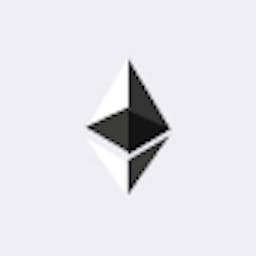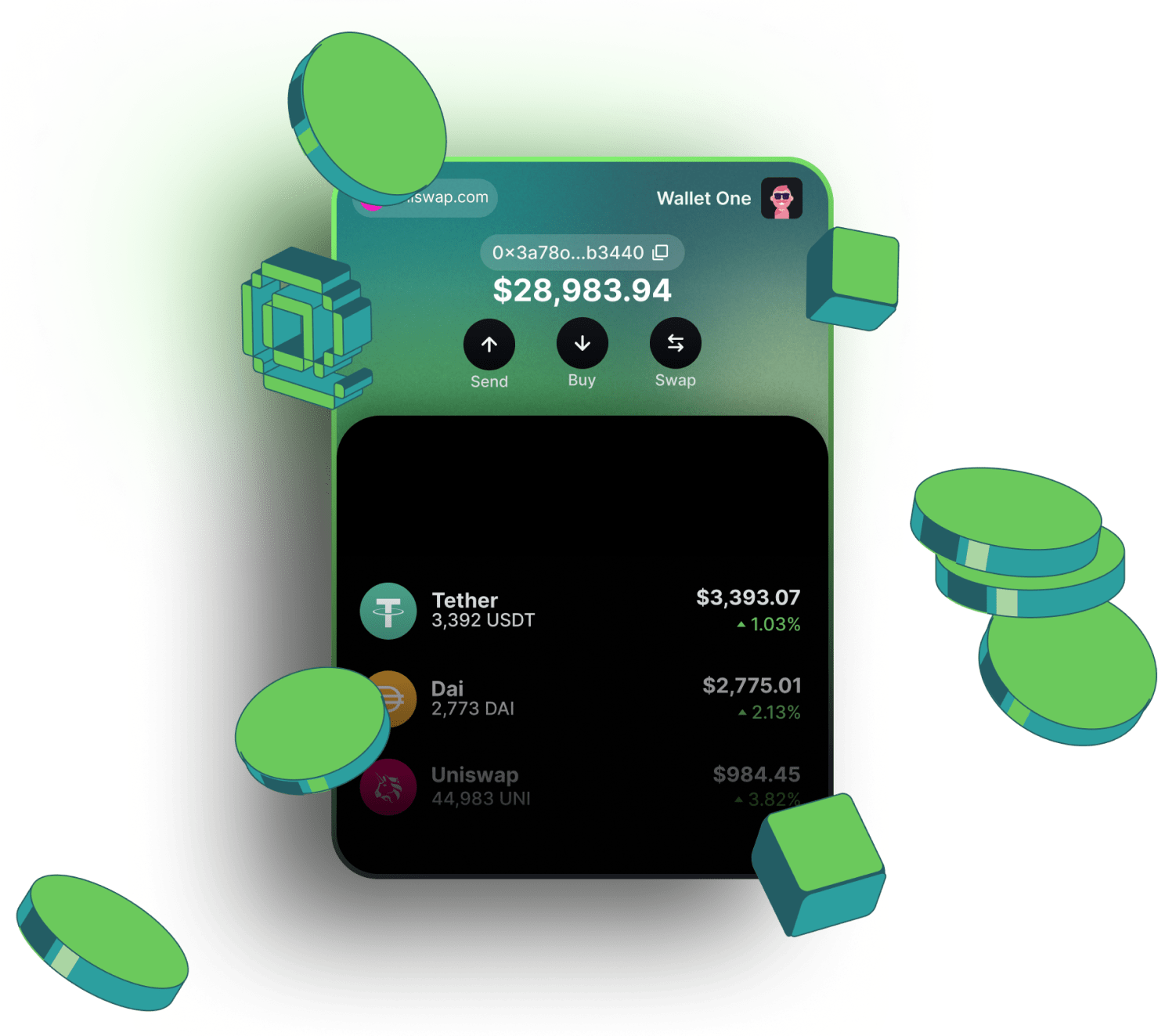Wigwam is the best  Ethereum blockchain crypto wallet
Ethereum blockchain crypto wallet

Why choose the Wigwam crypto app?
Work with Ethereum Testnets and Mainet
Buy Ethereum tokens, including native token, by using a credit card
Swap Ethereum-based tokens directly in the wallet
Possibility to connect the wallet to all Ethereum blockchain dAps: DeFi, DAO, Gamings, etc
How to get a Ethereum address in Wigwam web wallet
Create a wallet in Wigwam
Choose a Ethereum network from the dropdown menu
Copy you Ethereum address
Ethereum blockchain review
Ethereum is the second largest public blockchain network in terms of market capitalization after Bitcoin. Ethereum’s strength lies in its versatility and diversity which allow the developers to build decentralized applications (dApps) of various types, unlike the Bitcoin network whose only utility is limited to exchanging cryptocurrency.
Ethereum went beyond the traditional concept of using blockchain technology only for peer-to-peer payments and unlocked the possibility of launching dApps including but not limited to decentralized finance, play-to-earn games, NFTs, decentralized governance, and metaverse.
Origins & vision
Ethereum was Vitalik Buterin's brainchild, who envisioned a blockchain that supports the concept of building decentralized apps and would serve the community.
This vision became a reality in 2015 when Ethereum was finally launched as a public, decentralized, scalable, and secure blockchain that supported the development of various types of decentralized applications.
Key milestones
Ethereum’s Initial Coin Offering (ICO) happened in 2014 which resulted in raising $18.3M in funds.
First Ethereum block was created on July 30, 2015, marking it officially as a public blockchain.
To raise funds, Ethereum launched an investor-directed venture capital fund called Decentralized Autonomous Organization (DAO) in April 2016 that was later hacked and 3.6M ETH was stolen from its asset pool.
With the intention of diversifying Ethereum, a rare collectible NFT called Crypto Punks was launched in 2017.
To allow swapping Ether and other ERC-20 tokens with each other, Uniswap, the first decentralized exchange (DEX) was launched on top of Ethereum in 2018.
March 1, 2021, marked commercial acceptance for Ethereum on an enterprise level, as on this day, VISA started accepting USDC on Ethereum.
Moving a few months forward i.e. August 1, 2021, the London update went live that also included EIP 1559 which changed the way “gas fees” are estimated.
However, Ethereum witnessed its biggest milestone in September 2022 through “the Merge”, a technical upgrade that transitioned the network from Proof-of-Work consensus to Proof-of-Stake model.
What consensus algorithm does Ethereum blockchain use
Before September 15th, 2022, Ethereum used to follow the same consensus mechanism as currently employed by Bitcoin i.e.Proof-of-Work (PoW). However, the negative environmental impact, centralization risk, and economic inefficiency of PoW led Ethereum to transition to Proof-of-Stake (PoS).
This game-changing transition was observed through the “Merge” upgrade which not only reduced the energy consumption by 99.95% but also lowered the barriers to entry by eliminating the need to have sophisticated hardware.
The migration to PoS changed the way blocks are added to the Ethereum blockchain. Instead of solving the complex puzzles using sophisticated mining hardware, the users can simply stake and lock their Ether (the native token of Ethereum) into the contract, become a validator, and get the opportunity to be elected and propose the new block.
How Ethereum solved problems with scalability and speed
With the increasing popularity of Ethereum and the increasing number of decentralized applications arriving at it, the blockchain often experienced network congestion which would invite issues related to scalability and speed.
However, many technical upgrades have been introduced to solve these issues, the two of them have been discussed below
Layer 2 scaling
Layer 2 solutions like Polygon are designed to improve the scalability and reach finality faster by handling the transactions off the Ethereum Mainnet (Layer-1). The transactions are processed on Layer 2 and are then added to Layer 1’s mainnet where they cannot be altered. This allows the transactions to be added to the blockchain relatively faster while also reducing the congestion on Ethereum’s mainnet. Result? Low gas fees and improved user experience.
Rollups
Rollups are an innovative method where transactions are rolled up in bundles and are processed off-chain by validators, after which, the data is posted on layer 1 of Ethereum’s mainnet with the proof of validity. There are two types of rollups solutions namely- Optimism and ZK-Rollups (Zero Knowledge rollups).
DeFi ecosystem on Ethereum
The first Decentralized Finance project, called MakerDAO, was created in 2014 on top of the Ethereum blockchain, which marked the beginning of DeFi in the Web 3.0 ecosystem.
Even as of 2023, a year that has been experiencing a crypto winter, there are more than 500 DeFi DApps in the Ethereum ecosystem with more than $22 billion of Total Locked Value (source: DeFillama).
Moreover, Ethereum hosts some of the most popular DApps across all the segments of Decentralized Finance. From decentralized exchanges like ‘Uniswap’ and lending protocols like ‘Compound Finance’, to yield aggregators like Aura Finance, you will always find Ethereum-based DApps on top of the list in terms of unique active wallets (UAQs) and TVL (Total Value Locked). To work with the Ethereum DeFi ecosystem we would recommend a Wigwam DeFi wallet that has many advanced features for convenient work in crypto, including: multi-wallet support, advanced transaction tab, phishing protection icons, etc.
NFTs marketplaces on Ethereum
Ethereum's security, DeFi dominance, and compatibility with Ethereum Virtual Machine (EVM) incorporated its leadership in the NFT realm, hosting iconic projects like the Bored Ape Yacht Club.
While other blockchains support NFTs, Ethereum's pioneering role, thriving ecosystem, and user-friendly features have made it the top choice for creators, solidifying its leadership in the NFT space.
Some of the most popular NFT marketplaces like OpenSea, Rarible, Nifty Gateway, SuperRare, and Magic Eden run on top of the Ethereum network
Tokenomics and Gas Usage on Ethereum
Ether (symbolized as “ETH”) is the native cryptocurrency of the Ethereum blockchain protocol and is used for payment of gas fees (among other use cases) whenever the users execute transactions in the network. The average gas usage for transacting in the Ethereum network ranges from 20 Gwei to 50 Gwei (a Gwei is one billionth of one Ether). Ether (ETH) is also utilized in staking as a validator stake their ETH as collateral.
Conclusion
Moving fast forward to 2023, Ethereum has evolved into one of the most popular blockchain technologies and the first choice for developers to build decentralized applications. Serving as home to thousands of dapps, being operated by 7800+ nodes all across the globe, and $54B USD value locked in DeFi, the future for this mainnet looks bright.
FAQ
Ethereum (ETH) is the native token of the Ethereum blockchain
To access your account information, transaction details, and other activities executed on Ethereum, enter your public wallet address in the search bar at Ethereum Blockchain Explorer. This will grant you access to all your account history and transaction specifics.
Utilizing a private crypto wallet for your ETH is the most secure approach to transact. While there isn't a single "best" wallet universally recognized, here are some notable options to consider:
- Wigwam Web3 wallet
- Exodus Wallet
- MetaMask Wallet
- Trust Wallet
- MyEtherWallet (MEW)
MetaMask is an Ethereum wallet that is used for transacting ETH, ERC-20 tokens, and ERC-721 NFTs. Since this wallet interacts directly with Ethereum, there is no need to make any manual configurations. Also, to have a more convenient experience of using Ethereum, we would recommend using the Wigwam crypto wallet.
According to data from DappRadar, the top three most popular projects running on the Ethereum ecosystem span across DeFi, NFTs, and gaming. In the DeFi category, these projects include Lido, Marker DAO, and Uniswap V3. For NFTs, the notable projects are Bored Ape Yacht Club, The Captainz, and Mutant Ape Yacht Club. The popular games on Ethereum are Amino Move, Hytopia, and Cryptoforce.





